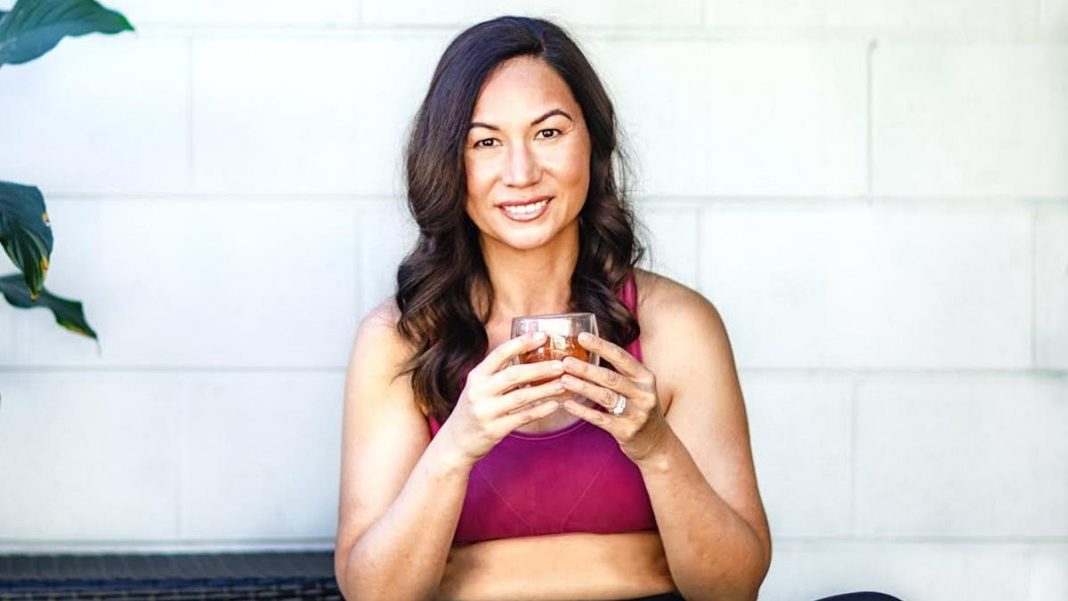Longevity is having a moment.
From tech billionaires testing stem cell transfusions from their teenage sons to hyperbaric oxygen chambers and infrared saunas, it seems ‘reverse ageing’ is the latest obsession of the super-rich.
But here’s the truth the wellness industry won’t often admit: you don’t need to be a Silicon Valley venture capitalist or spend tens of thousands on supplements and biohacking gadgets to reclaim your health.
You can start in your pantry. And I did.
In my mid-forties, I decided to test a theory: could simple, consistent dietary changes improve not just my health, but reduce my biological age? By which I mean the measure of how well your body is functioning, as opposed to how many birthdays you’ve had.
The results – tracked through validated biological age testing methods – surprised even me. Within 18 months, I had reduced my biological age by just over 10 years.
Not with injections or cryotherapy, but with food.
This is not a marketing gimmick. It’s the result of years of clinical knowledge, evidence-based nutrition and daily habits. My biological markers – inflammation, insulin sensitivity, mitochondrial health, gut microbiome diversity – all improved.
It proves that while ageing is inevitable, how we age is far more malleable than we’ve been led to believe.
So what did I actually do? And what can you do too, without blowing your retirement fund on spurious and experimental treatments?
1. I replaced blood sugar spikes with metabolic stability
The fastest way to accelerate ageing is to destabilise your blood sugar, and most of us are doing it daily, often without realising.
The modern diet is laced with ultra-processed foods, refined carbohydrates and hidden sugars, all of which create inflammation, fat storage and hormonal chaos.
When blood sugar spikes and crashes repeatedly, it creates oxidative stress, damages blood vessels and accelerates cellular ageing. One of the most effective interventions I made was to front-load protein at every meal, particularly breakfast.
Most Australians start their day with toast, cereal or a banana. I now start mine with a protein smoothie made with clean protein powder, Greek yoghurt, chia seeds, spinach and berries. Or I’ll have eggs with leafy greens, cottage cheese and avocado.
The goal is to hit 30 grams of protein at each meal, which supports muscle maintenance, reduces cravings and flattens the glucose curve.
I also began pairing all carbohydrates with protein and fat, which slows glucose absorption and keeps me feeling full and focused for hours.
Simple tweaks like adding tahini to sweet potato, or hummus to crackers, have a profound cumulative effect on long-term metabolic health.
2. Eat more colourfully
Longevity isn’t about eating less. It’s about eating smarter, and more colourfully. The key dietary change I made wasn’t what I took away, but what I added.
I aimed for 30 different plant foods a week, including herbs, spices, fruits, vegetables, legumes, nuts and seeds. This diversity supports the gut microbiome, which is increasingly recognised as a central regulator of inflammation, immunity and even brain health.
Every meal became an opportunity to add something healing – a sprinkle of turmeric, a spoonful of fermented kraut, a handful of rocket or chopped parsley. I didn’t diet; I curated. The more plants I added, the less room there was for processed fillers.
Within months, my digestion improved, my skin glowed and my energy stabilised. And crucially, my inflammatory markers dropped.
3. Prioritise key mitochondrial nutrients
Mitochondria are the tiny powerhouses inside your cells responsible for energy production. But they are also deeply sensitive to poor diet, toxins and stress.
Ageing, at its core, is mitochondrial decline.
To support mine, I included key mitochondrial nutrients daily:
- Magnesium from almonds, leafy greens and pumpkin seeds
- Coenzyme Q10 (naturally occurring in oily fish and organ meats)
- Polyphenols from blueberries, extra virgin olive oil and green tea
- Sulforaphane from lightly steamed broccoli and cruciferous vegetables
I also began eating within a 12-hour window, finishing my last meal at 7pm then fasting overnight between dinner and breakfast after 7am. This allowed my body to shift into repair mode more often, supporting autophagy, the body’s internal clean-up process.
4. The one-coffee rule
Stress, both physical and emotional, is a silent accelerant. It drives up cortisol, disrupts sleep, dysregulates appetite and contributes to systemic inflammation.
I used to rely on coffee to push through the day. Now, I drink one cup of high-quality coffee with food in the morning, and switch to peppermint tea by mid-morning.
I also added magnesium-rich foods, B vitamins from legumes and leafy greens, and started walking daily outdoors.
Over time, my nervous system stopped living in fight-or-flight mode. That, more than anything, helped to reset my sleep, mood and metabolic health.
5. Strength-based workouts are essential
One of the most underappreciated elements of longevity is skeletal muscle. From our mid-thirties, we lose muscle mass naturally – unless we fight for it.
Muscle protects against insulin resistance, supports hormone production and improves physical resilience. I began resistance training three times a week – simple strength-based workouts with bodyweight, resistance bands and free weights.
The biggest dietary support for this was adequate protein and leucine-rich foods such as tofu, lentils and tempeh.
Protein isn’t just a weight loss tool; it’s a longevity tool.
6. I made everything from scratch
Perhaps the most radical shift I made – and the one people tend to resist the most – was giving up processed convenience foods altogether.
I make everything at home. That includes sourdough bread, mayonnaise, salad dressings, sauces, stock, nut milks and even granola.
Nothing comes out of a bottle, nothing is pre-made.
This isn’t about perfectionism; it’s about having control of ingredients, additives and the inflammatory load you place on your system.
What most people don’t realise is that even ‘healthy’ packaged foods are often ultra-processed. They contain seed oils, emulsifiers, artificial sweeteners and preservatives that disrupt the gut, affect insulin sensitivity and burden the liver.
Just because they are legal does not mean they are harmless.
When you cook from scratch, you remove that burden. You strip away the hidden sugars, synthetic fillers and additives designed to make food shelf-stable rather than nourishing. In their place, you reintroduce food that your cells recognise, nutrients your mitochondria can use, fibre your microbiome thrives on.
I bake my own slow-fermented sourdough using organic flour and a live starter, rich in prebiotics that support gut health. I make salad dressings with extra virgin olive oil and apple cider vinegar, not refined canola and thickeners. My tomato sauces are made with real tomatoes and garlic, not powders or synthetic flavourings.
These choices, replicated day after day, changed my inflammation profile, improved my digestion, and helped my body repair rather than simply function.
I know what you’re thinking – but it is not elitist to cook this way. Yes, it can be time-consuming, but it does not have to be complicated. Cooking from scratch can also be therapeutic in its slowness, and your body will thank you for the investment.
In conclusion, growing older is nothing to shy away from – but feeling constantly tired, foggy, bloated or reliant on caffeine just to get through the day can wear you down and age you in all the wrong ways. If that’s the result of pushing your body too hard and not giving it enough fuel, why wouldn’t you make a change?
The wellness industry would have you believe the secret lies in expensive peptides, cryotherapy, ozone saunas or IV drips. And while those things may have their place, they are not what makes the greatest difference.
The greatest difference comes from consistency: What you eat at breakfast, what you leave out of your shopping trolley, what you choose to add to your plate when no one is watching.
You don’t need to be a billionaire with a lab in your basement to reduce your biological age. You just need a shopping list, a few good recipes and the willingness to commit to better living, day after day.
I wrote The Long Life Plan because I believe longevity should be democratic. It should not be reserved for Rich Listers with personal chefs and biometric scanners. It should be achievable for anyone with a pantry, a stove and a body worth taking care of.
That is the true biohack. And it starts with what is already on your shelf.
Faye James is a Sydney-based accredited nutritionist and author of The Long Life Plan, The Perimenopause Plan, The 10:10 Diet and The Menopause Diet. She focuses on functional nutrition and evidence-based lifestyle strategies for women over 40.






